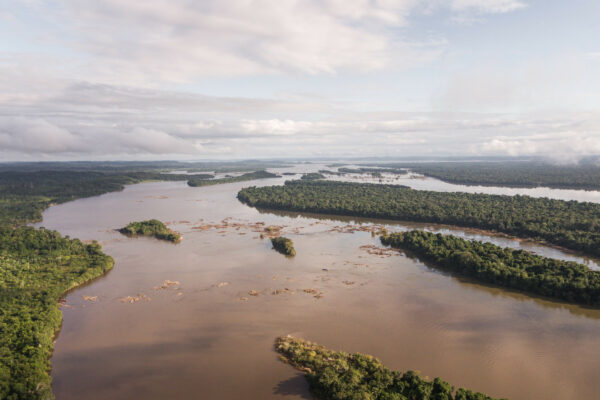WASHINGTON, Dec 19 (IPS) – The Inter-American Development Bank approved key financing Wednesday for a Peruvian bid to become an exporter of gas, over the objections of environmentalists and indigenous people’s advocates.
The IDB cleared a 400-million-dollar loan to build a pipeline for natural gas from Peru’s Camisea fields, in one of the most pristine parts of the Peruvian Amazon.
The sum is a sliver of the project’s overall price tag of 3.9 billion dollars but comes with an institutional seal of approval and political cover sought by private investors. Problems in dealing with successive Peruvian governments led energy major Royal Dutch/Shell to abandon its exploration of the Camisea fields in 1998, after nearly two decades.
The U.S. Export-Import Bank and International Finance Corporation also are expected to pledge support in coming weeks.
The project consists of a plant to liquefy natural gas, a 400-kilometre pipeline connecting it to an existing conduit, and a marine export terminal. The IDB described it as the largest private investment in Peru’s history and a critical step toward the country’s goal of achieving oil and gas self-sufficiency.
Peru was a net oil exporter but for some years it has imported more than it has sold abroad. Gas from the Camisea fields, which is being extracted under a previous round of financing, offers cheaper and cleaner energy for local consumers. Once the second phase now being financed is completed, the gas also will be available for export.
The project could boost Peru’s gross domestic product (GDP) by an average of 0.4 percent a year during the construction period and 0.5 percent thereafter, the IDB said. The scheme could generate 230 million dollars a year in incremental royalties and 90 million dollars in income tax revenue for the government in Lima, it added.
At least in the interim, the principal beneficiary will be a consortium led by U.S.-based Hunt Oil and including Spain’s Repsol-YPF, South Korea’s SK Energy, and Japan’s Marubeni Corporation. Together, the firms have poured some 800 million dollars into the project.
The IDB said it met periodically with advocacy groups over the past 18 months and had taken into account their concerns “about the project’s potential impact on people living in the project area”.
“The bank’s participation in this project contributes significantly to the environmental and social management plans and systems of the companies, especially in terms of investments in community development and environmental protection,” said Martin Duhart, the bank’s project team leader.
Even so, critics said the bank had waved off Peruvian and U.S. groups’ calls to put off new financing pending further evaluation of social, environmental, and economic concerns raised by operations at Camisea.
“Four years after the IDB financed the first phase of this project, it has voted to finance the second phase without evaluating, much less addressing, the tragic impacts of the first phase,” said Aaron Goldzimer, Peru expert at Environmental Defence, a lobby here.
Indigenous people in locales previously untouched by the modern world died from disease after their first contact with project workers in the 1980s and since then, vast swathes of ancestral land have been carved up in a series of concessions to energy firms, project critics said. Plants, animals, and other ecological assets have come under unprecedented pressure from operations and from soil erosion along the existing pipeline, they added.
IDB officials long have said their involvement in Camisea has held the project to higher environmental and social standards than would otherwise have applied.
Amazon Watch, the indigenous people’s advocate, remained unconvinced.
“Since it broke ground in 2001, Camisea has constantly been in breach of best industry practices, including the upstream consortium’s failure to provide adequate impact assessments for local communities and their precious rainforest habitat,” it said in a statement before Wednesday’s vote.
Atossa Soltani, the group’s executive director, said Wednesday the bank’s decision “circumvented good judgement and the IDB’s own social and environmental policies.”
Peru’s government is banking on the oil and gas industry to drive economic growth – currently around 8 percent a year – and is seeking investments of around five billion dollars over the next four years. In addition to adding export capacity to Camisea, plans include new petrochemical plants along the southern coast.













